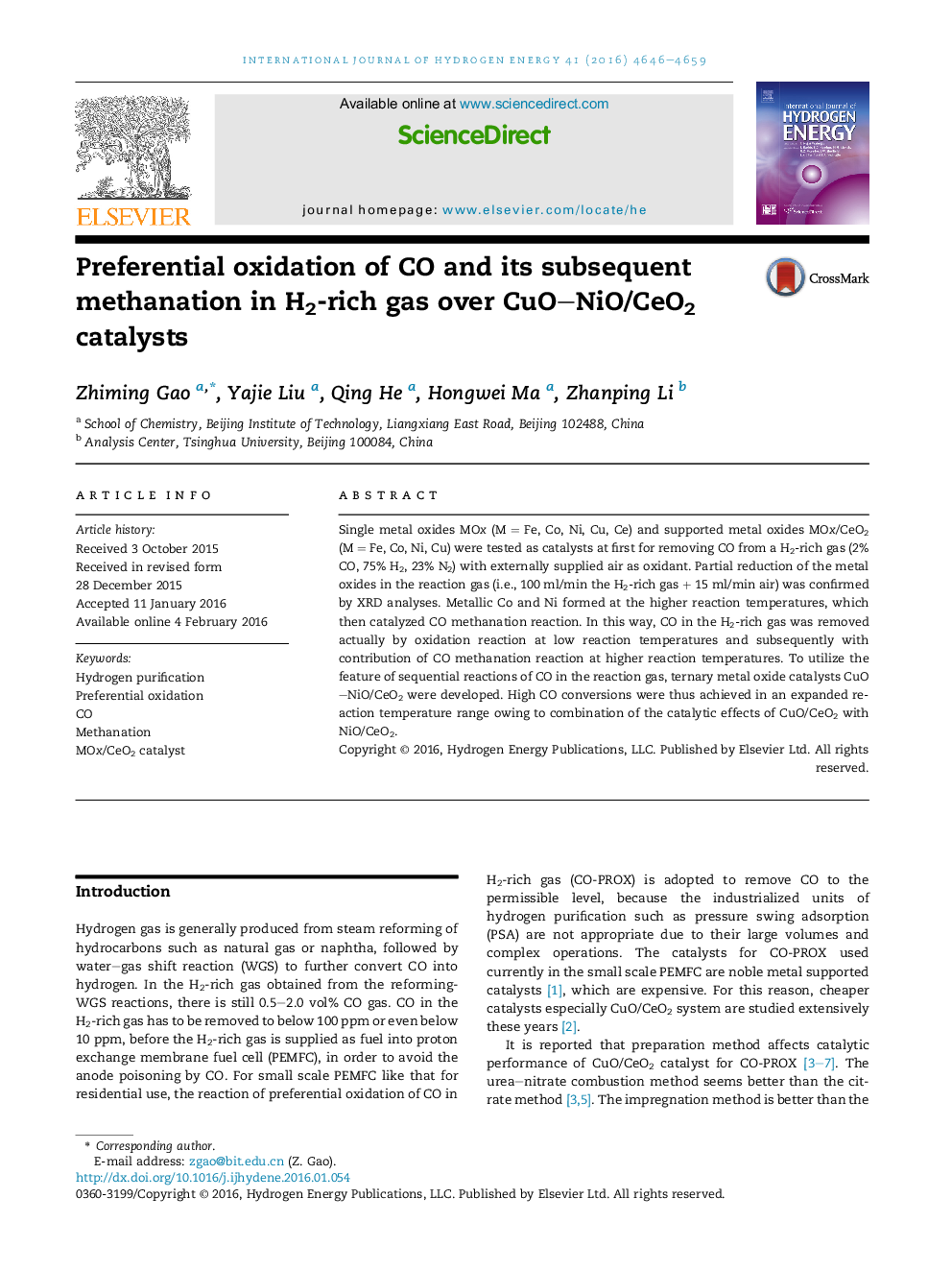| Article ID | Journal | Published Year | Pages | File Type |
|---|---|---|---|---|
| 1271152 | International Journal of Hydrogen Energy | 2016 | 14 Pages |
•Co3O4 is a good catalyst for CO removal from the CO-PROX reaction gas.•NiO/CeO2 is better than Co3O4/CeO2 as catalyst for the reaction.•Metallic Ni and Co can be formed at the higher reaction temperatures.•CuO–NiO/CeO2 catalyst produced high CO conversions in a wide temperature range.
Single metal oxides MOx (M = Fe, Co, Ni, Cu, Ce) and supported metal oxides MOx/CeO2 (M = Fe, Co, Ni, Cu) were tested as catalysts at first for removing CO from a H2-rich gas (2% CO, 75% H2, 23% N2) with externally supplied air as oxidant. Partial reduction of the metal oxides in the reaction gas (i.e., 100 ml/min the H2-rich gas + 15 ml/min air) was confirmed by XRD analyses. Metallic Co and Ni formed at the higher reaction temperatures, which then catalyzed CO methanation reaction. In this way, CO in the H2-rich gas was removed actually by oxidation reaction at low reaction temperatures and subsequently with contribution of CO methanation reaction at higher reaction temperatures. To utilize the feature of sequential reactions of CO in the reaction gas, ternary metal oxide catalysts CuO–NiO/CeO2 were developed. High CO conversions were thus achieved in an expanded reaction temperature range owing to combination of the catalytic effects of CuO/CeO2 with NiO/CeO2.
